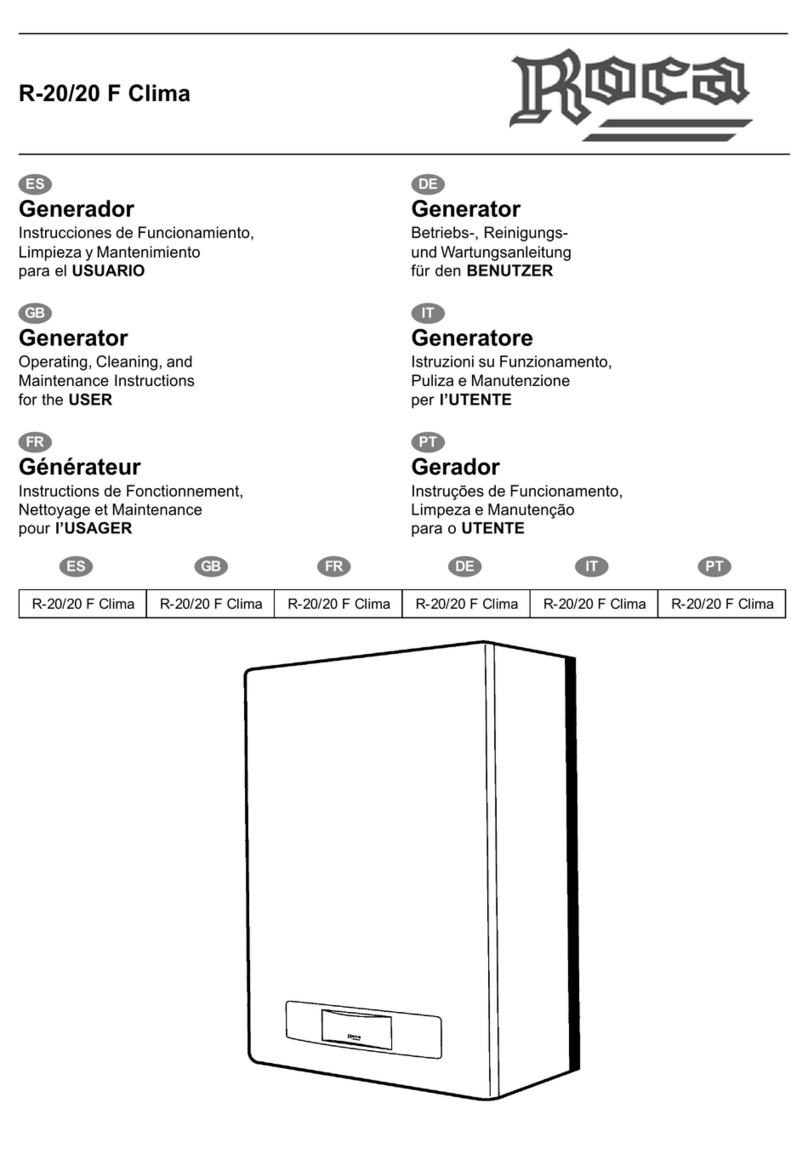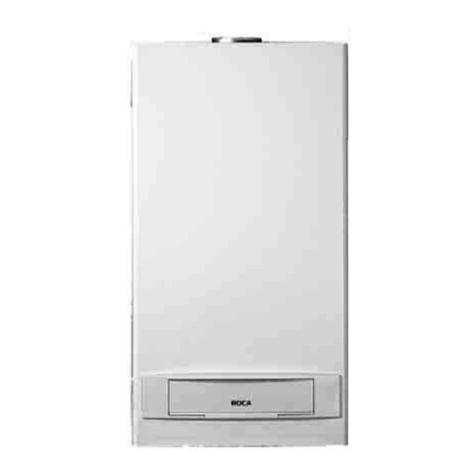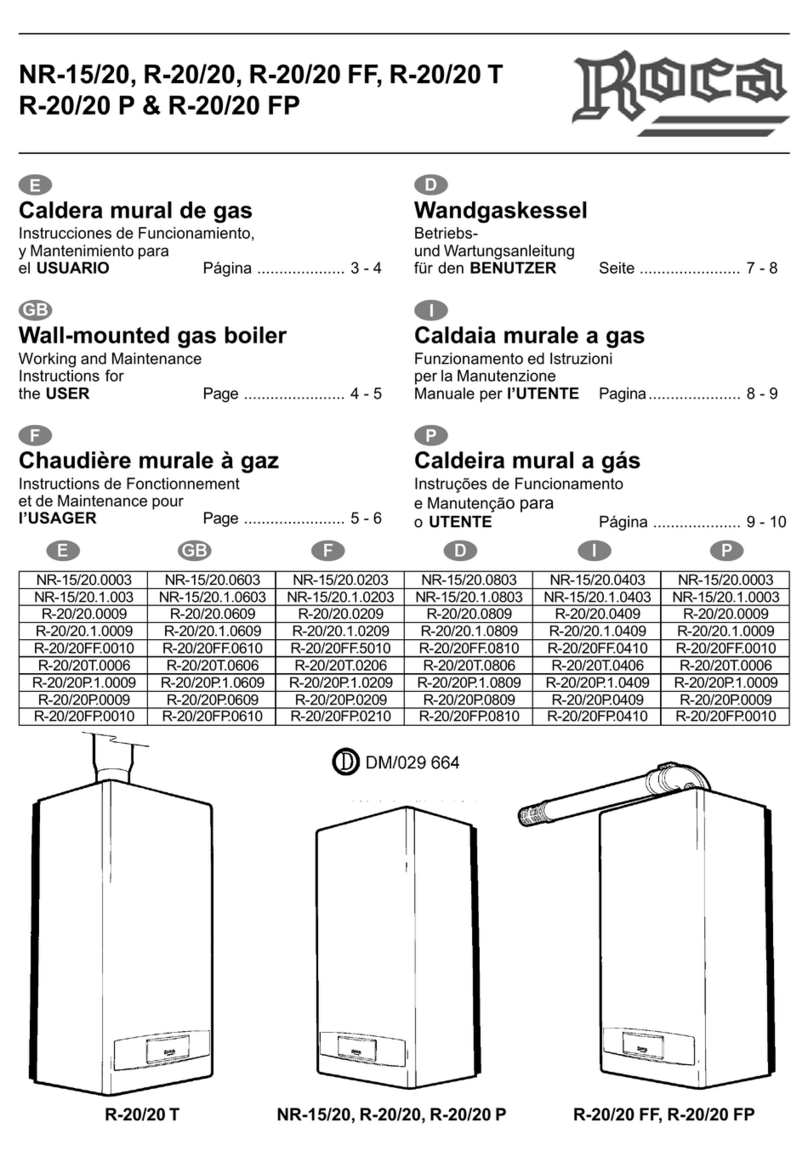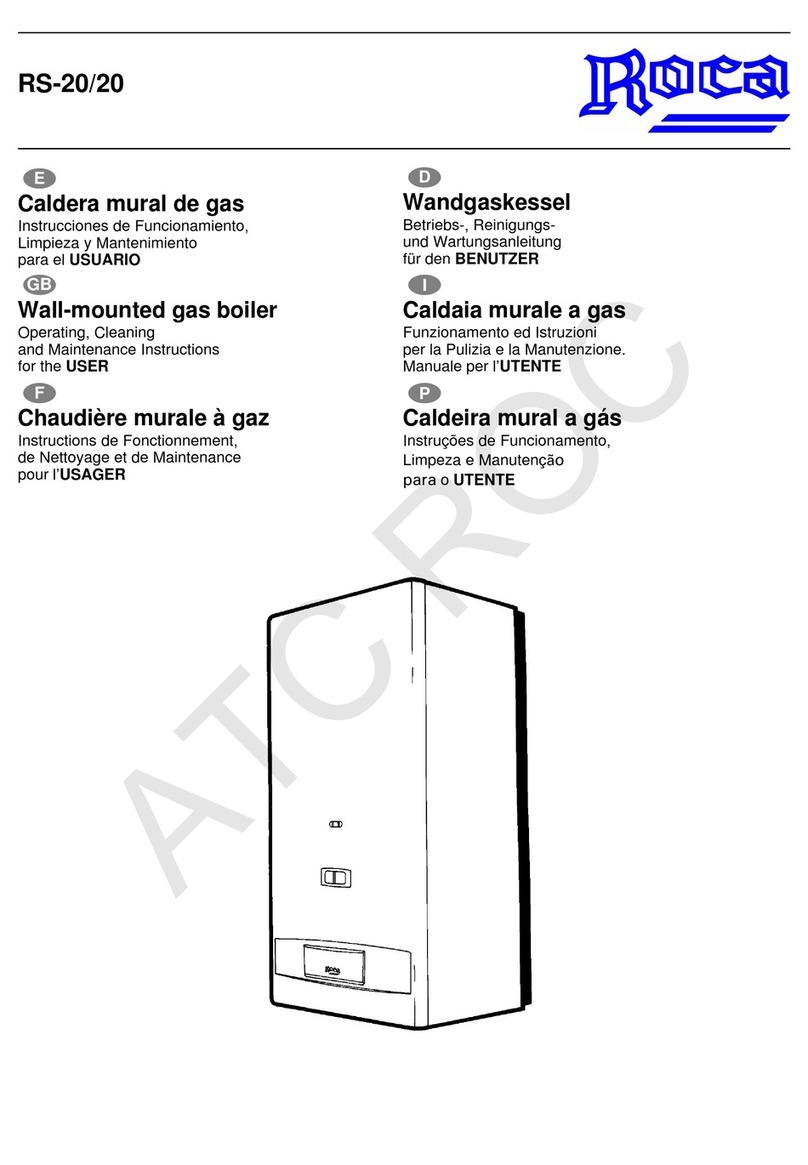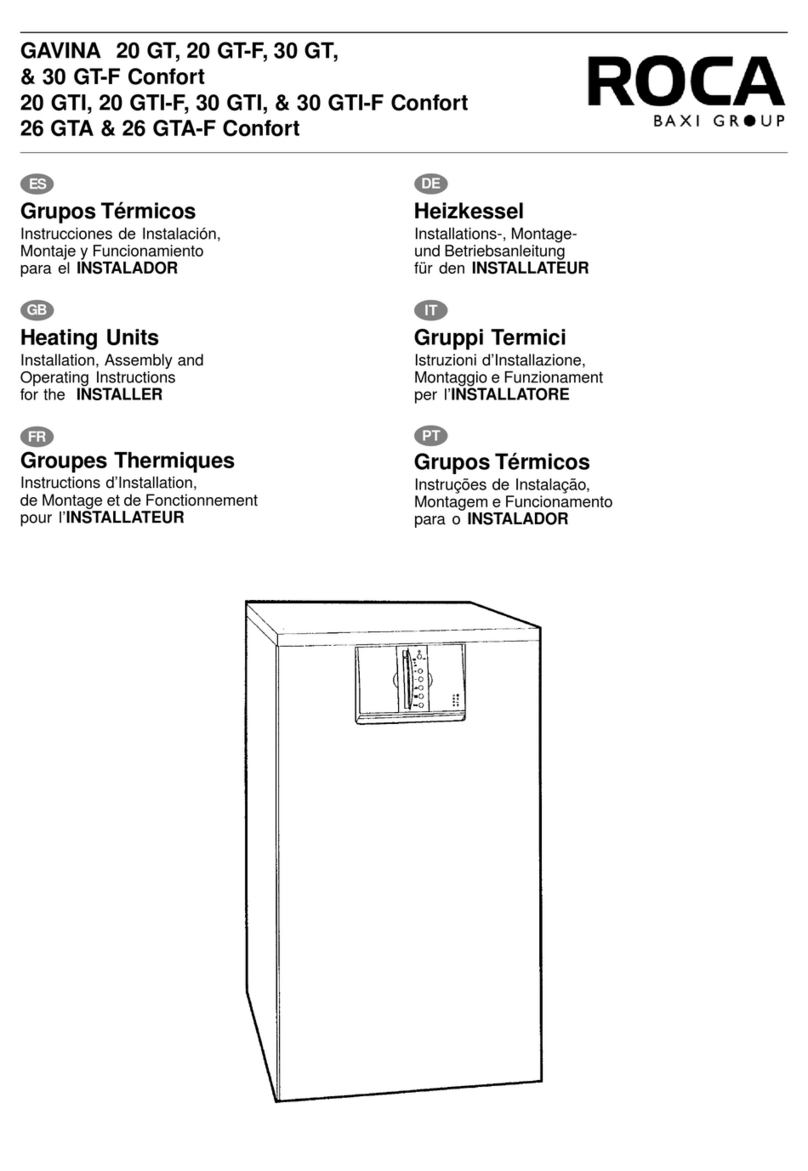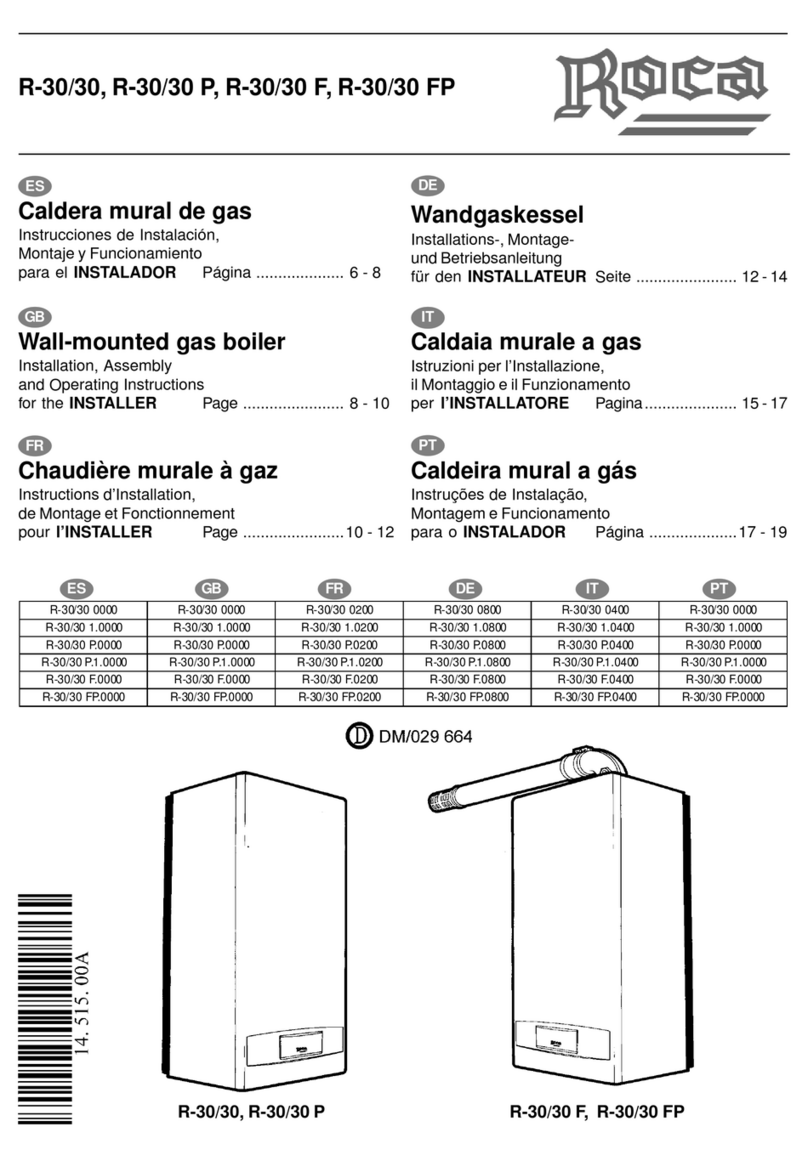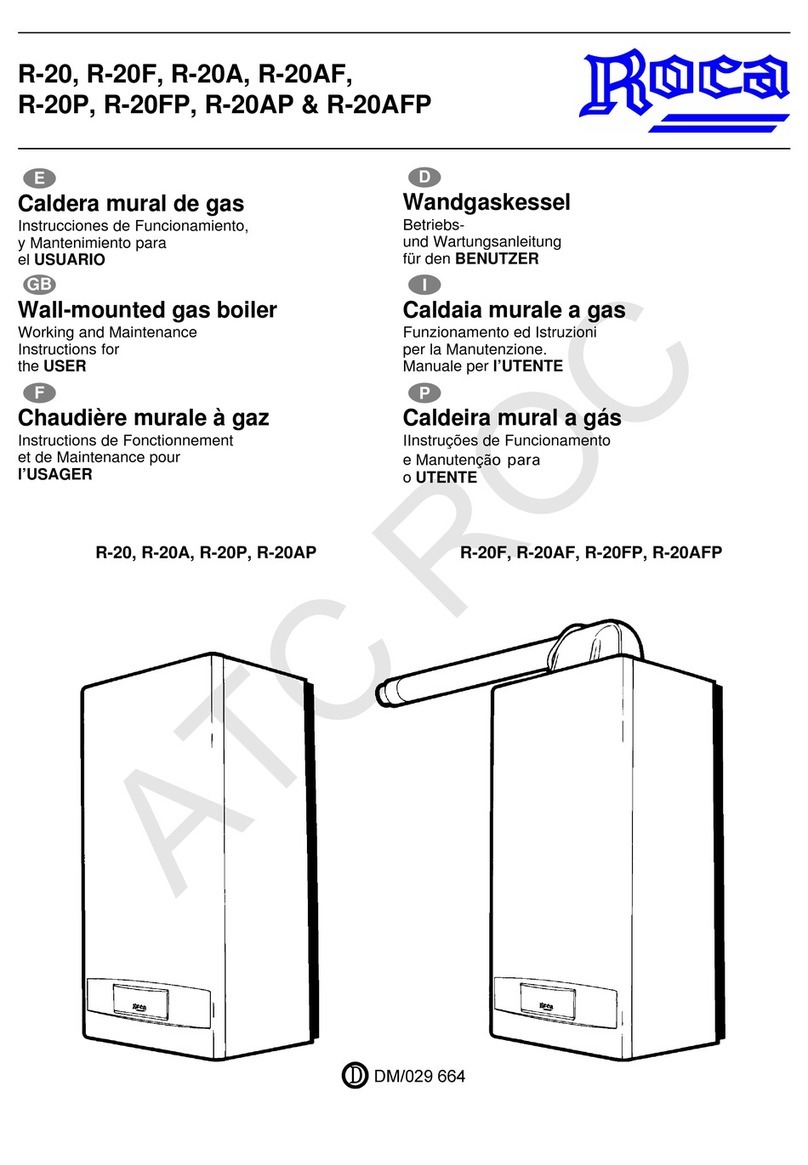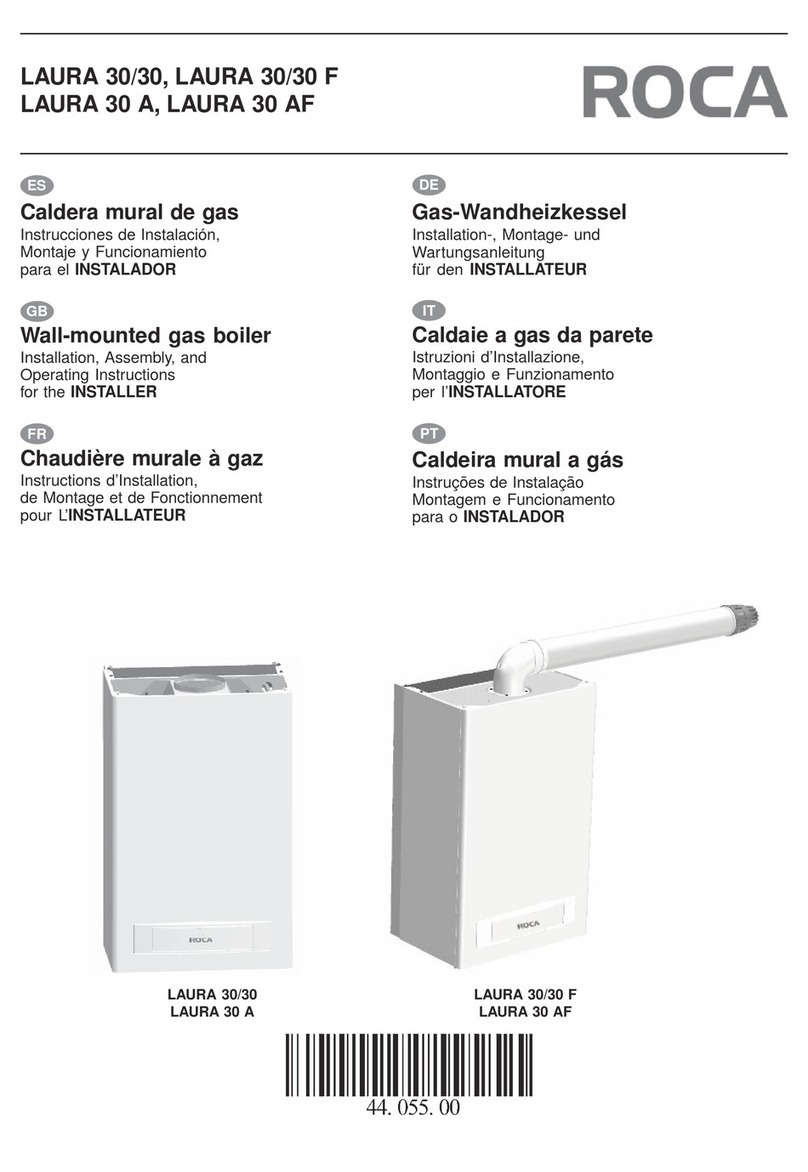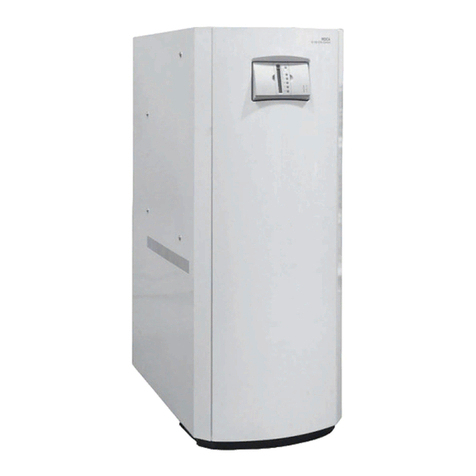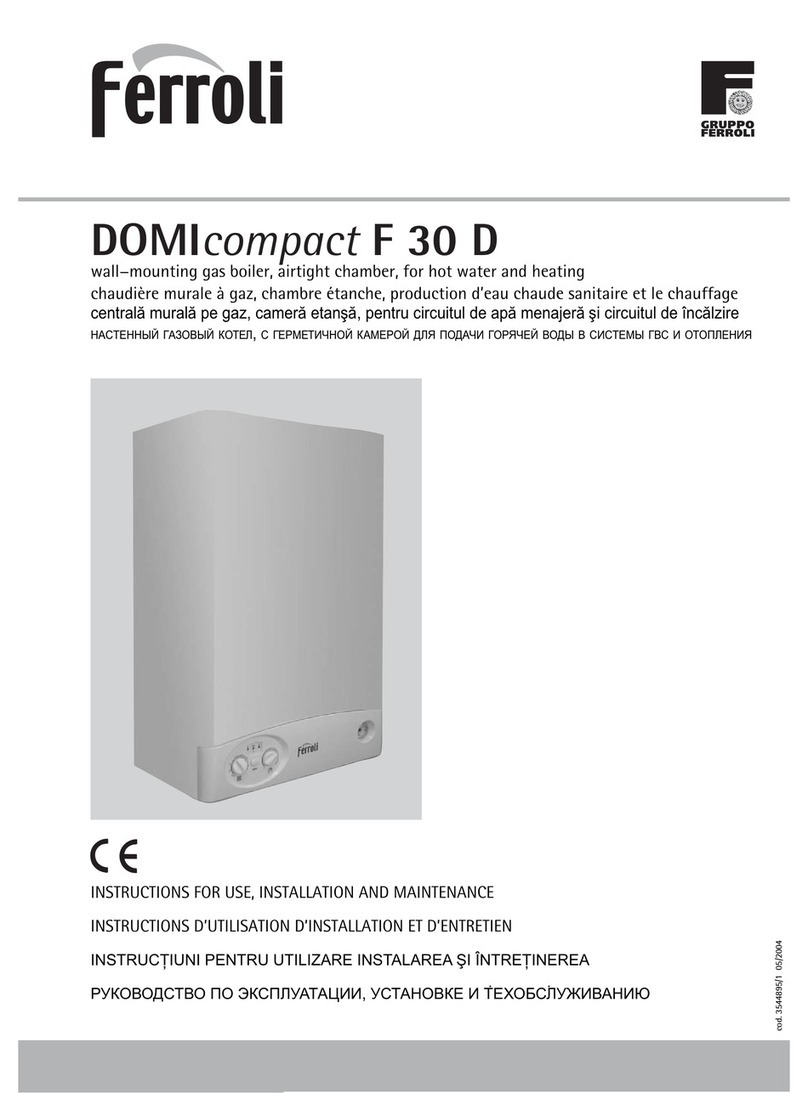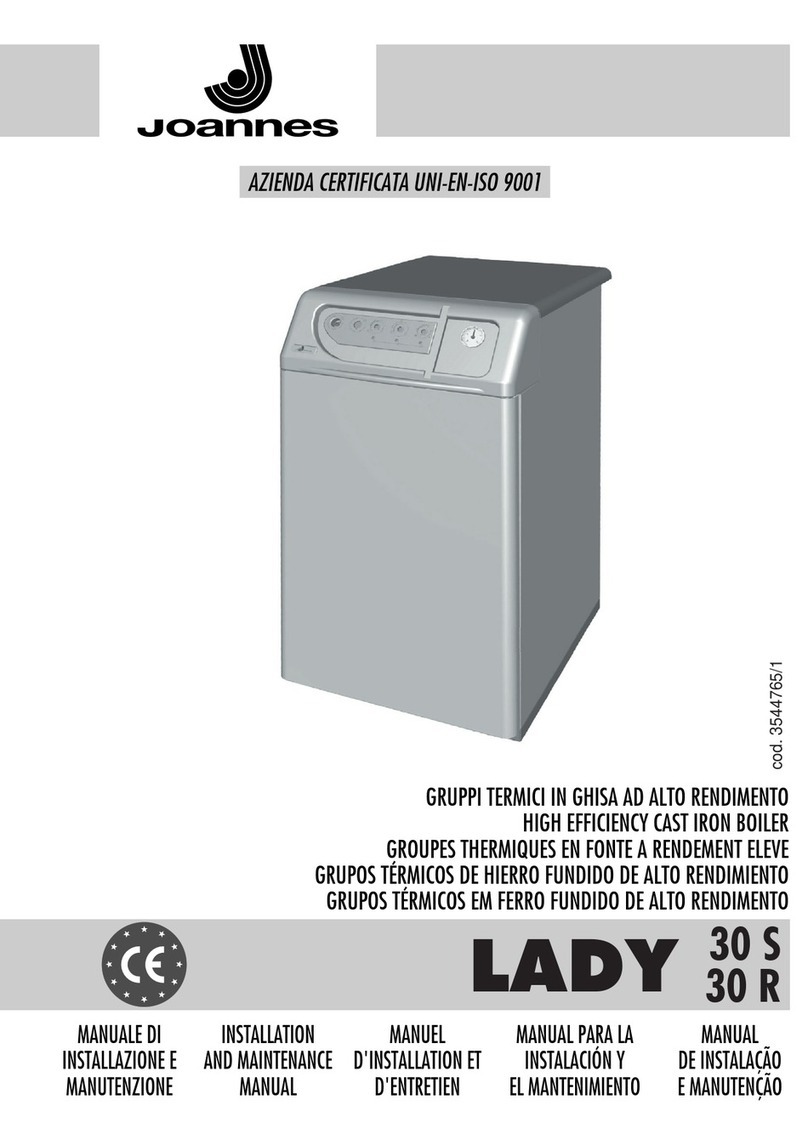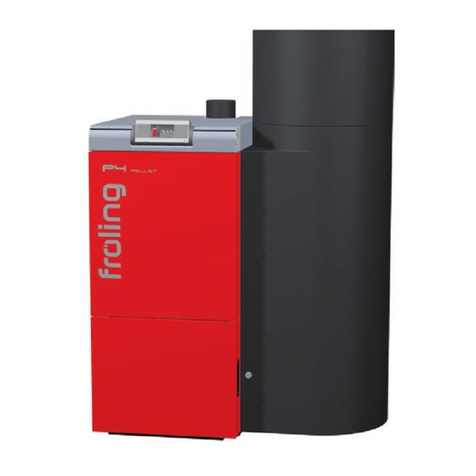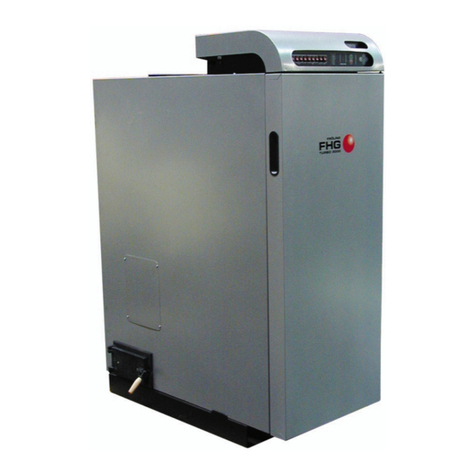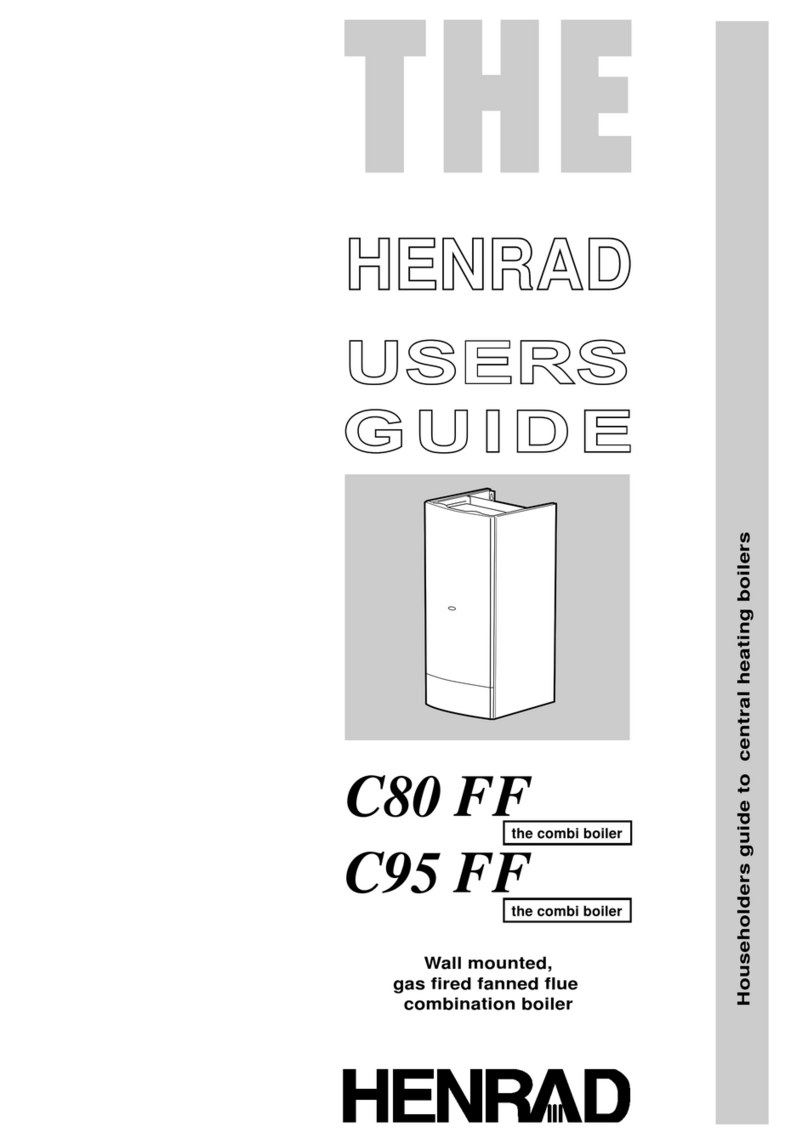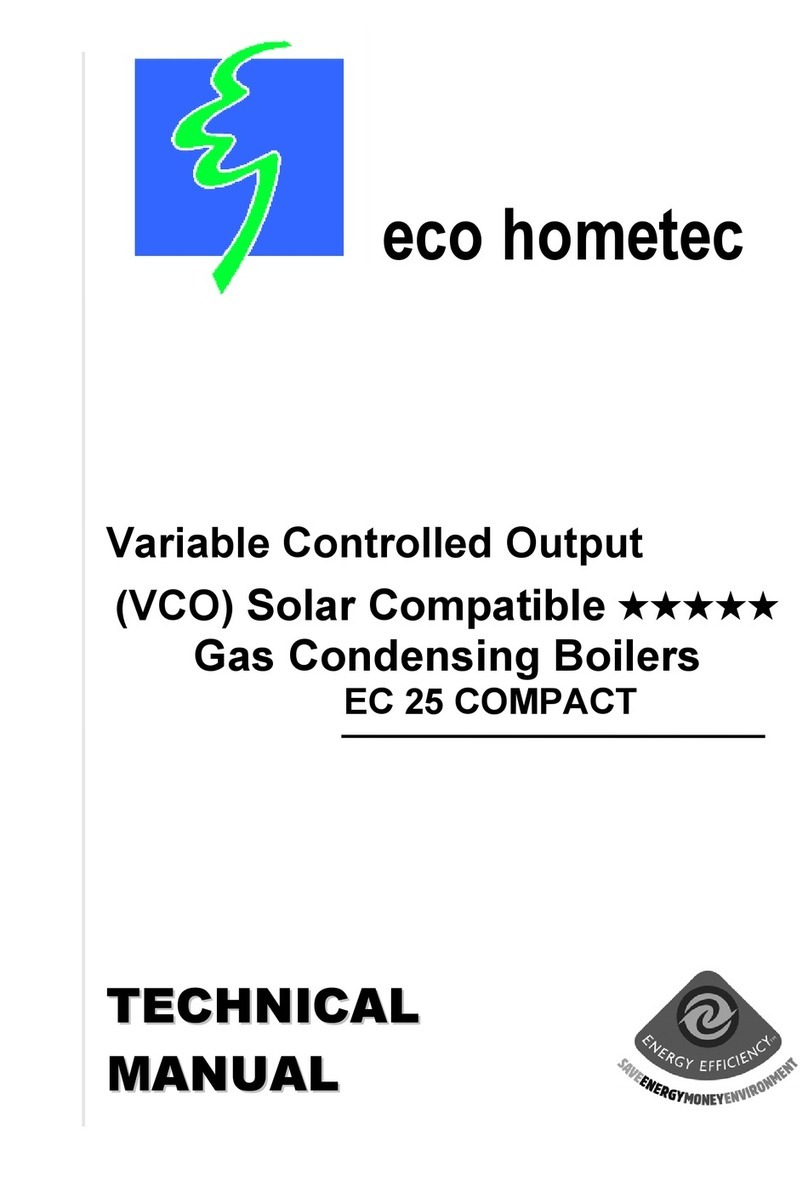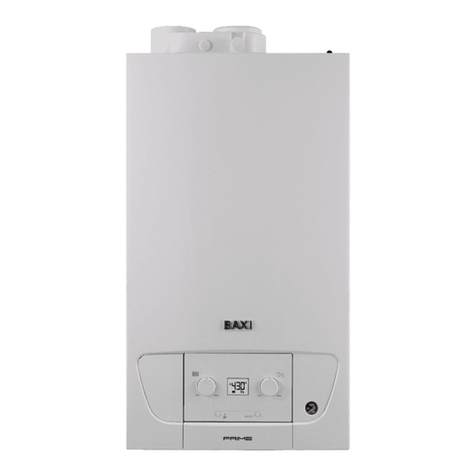10
Safety against opening the firedoor
It is impossible to open the firedoor (5) accidentally once the
burner door (16) is immobilized since the flange (24) makes it
impracticable. The firedoor can be opened only after
deliberately loosening bolt (23) and opening the burner door.
Controls
19 - Insert the triple* pocket in the tapping (9) and the pocket
for the control panel altitude gauge in the tapping (25) in
thefrontsection after removing the metal plugs from both
of them.
* Supplied in a plastic bag inside the control panel packing.
Control panel
The control panel that forms part of the complementary
equipment for using fluid fuels has to be installed on the top
casing cover, and so will be fitted after assembling the casing.
Watertight test
20 - Fill the installation with water and check that there are no
leaks in any part of the hydraulic circuit.
Fitting the casing
According to whether the boiler is intended for continuous use
ofsolidor fluid fuels,itisadvisable to opentherequirednumber
ofpre-punchedholesin the top cover, taking intoconsideration
the apparatuses or control panel that are going to be fitted. In
the latter case, the three knock-outs should be cleared.
21 - Place the top cover (27) on the boiler, introducing the rear
endsofthe twotie-rodsinthe holes providedinthecasing.
22 - Situate the right (28) and left* (29) side casing panels in
their respective sides of the boiler. The left panel has an
opening (30) where the cable entry carrying the cable
connecting the burner and the control panel in fluid-fired
boilers should be fitted.
* When the boiler incorporates a burner door, the slots (31) on the front
edge which coincide with the hinges should be left free.
23 - The lower front brackets (32) should be fixed between
the two nuts screwed on the ends of the tie-rods*, while
the rear ones (33) fit on the ends of the tie-rods.
* Where a burner door has been fitted to the boiler, this should be
opened to allow easy manipulation of the nuts.
24 - Insert the side edges of thetopcover(27)intothe locating
lugs (34) on the upper edges of the side casing panels.
Fasten the two sides to the top cover using the four self-
tapping screws provided – two in the front part (26) and
two in the rear (57).
25 - Hang the back cover (35) introducing the four locating
lugs into their respective slots (36) punched on the rear
edge of the side casing panels.
26 - Fit the casing panels (37) and (38) to the firedoor and
ashpit door respectively, using the screws and washers
provided.
27 - Fit* the hexagonal rod (39) and the chain (40) of the
damperregulator asindicatedinthe instructionsthatcome
with it.
28 - Open the firedoor and fit* the plate (41) for protecting the
damper regulator in the front part of the top casing cover,
using the two M4 screws supplied. Close the firedoor.
* Thisoperationwillnotbenecessaryinboilersintendedfor continuous
use of fluid fuels if a damper regulator has not been fitted.
29 - In boilers designed for solid fuel firing, screw the altitude
orcombinedtemp./altitudegauge,-whichever control unit
is chosen-, in the pocket provided for this purpose in the
front section. (See operation 8 in “Assembly”).
Fitting the control panel
The control panel that is supplied with the complementary
equipment for using fluid fuels incorporates the relative parts,
as well as the terminal strip and the burner door microswitch.
30 - Fit the two fixing brackets for the control panel to the top
casing cover, using the screws provided.
Electrical connections
31 - Before fitting the control panel, make the electrical
connections in accordance with the following diagram.
The burner cable incorporates a multiple connection plug and
acableentry. Thelatter should be fitted in theexistingopening
(30) in the left-hand side casing panel.
Likewise with the cable that supplies the pump, its cable entry
should be fitted in the exiting opening (58) in the rear part of
the left-hand side casing panel.
The mains power cable is passed through cable entry (47).
If an ambient thermostat is installed, then its cable will pass
through (59).
Thedifferent cablesfromthe controlpanelwill comeoutthrough
the same knock-out in the top casing cover.
32 - The bulbs for the control thermostat (48), limitthermostat
(49) and the thermometer (50) are inserted* in the triple
pocket which is in turn introduced in the tapping provided
forthispurposeinthefrontsection. Fastenthecapillaries
with the clip in the pocket.
Screw*the altitudegaugesensor(51)inits pocket,located
inthechosen tappinginthefront section. (See“Assembly”
operations).
* Through the knock-outs in the top casing cover which have not been
used for passing electrical cables.
33 - Secure the control panel (52) using the bracket fitted to
the top casing cover and the M6 screws provided.
Operation
Schematic Wiring Diagram
(See Diagram)
Operations prior to the first lighting
1 - Check that the installation is full of water and place the
fixed pointer on the altitude or combined temp./altitude
gauge in the position corresponding to the static head of
theinstallation.
2 - Check the pump for correct operation.
3 - Bleed the air from the system and radiators.
4 - In installationswitha sealed expansion vessel, top up with
water (if necessary) until the mobile pointer on the altitude
orcombinedtemp./altitude gauge isslightlyabovethe fixed
one. Whereanopenexpansionvesselhasbeeninstalled,
refill until the mobile pointer levels with the fixed one.
First lighting with solid fuels
5 - Check that the smokehood damper is open. (Handle in
position “A”).
6 - Open the ashpit door, lower the front section grille and put
a sufficient amount of straw or paper, kindling or coal so
as to aid lighting up.
While doing this, keep the firedoor and its observation
window closed. The latter will be kept open only when
using fuel with an excessive content of volatile material
requiring a secondary supply of air for burning.
7 - Switch on the system circulating pump.
8 - Following the initial combustion, put the grille back in its
original position and close the ashpit door.
9 - Open the firedoor and stoke with the chosen fuel, loading
it so as not to smother the fire, to an appropriate level.
Closethefiredoorandcheck that there are no leaks of flue
gases.
